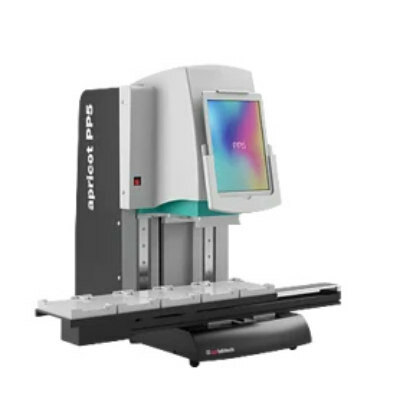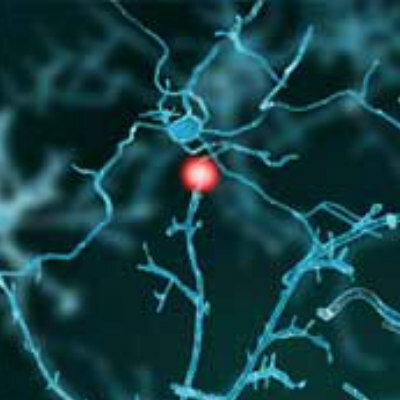Respiratory Syncytial Virus Bronchiolitis Has Different Subtypes
|
By LabMedica International staff writers Posted on 30 Jun 2021 |
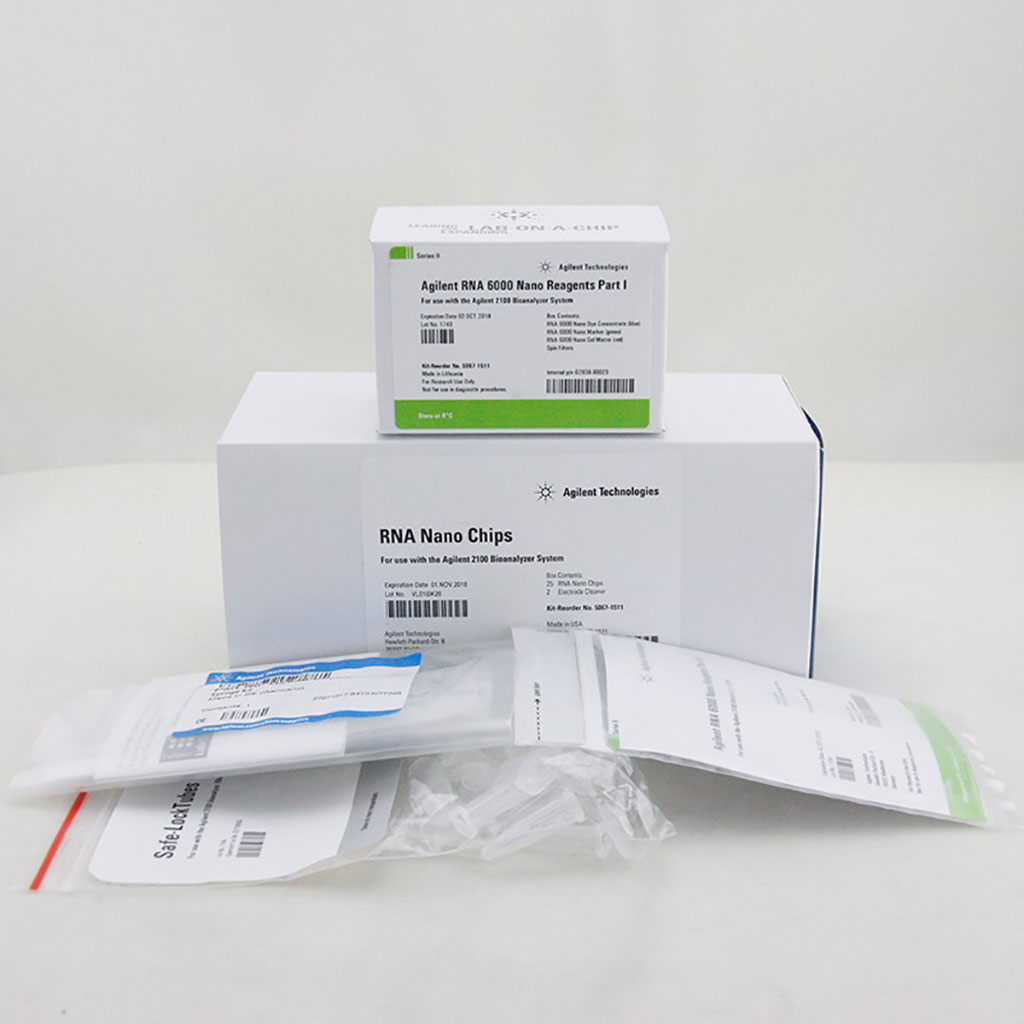
Image: The Bioanalyzer RNA 6000 Nano assay provides reliable and reproducible characterization of total RNA and mRNA from multiple sample types, from as low as 5 ng of total RNA (Photo courtesy of Agilent)
Bronchiolitis is the leading cause of hospitalization in infants in the USA, accounting for about 110,000 hospitalizations annually. In addition to the substantial acute morbidity, around 30% of infants hospitalized for bronchiolitis (“severe bronchiolitis”) subsequently develop asthma in childhood.
Of the major causative pathogens, respiratory syncytial virus (RSV) infection during infancy has the largest population attributable fraction. While bronchiolitis has been considered a single disease with similar mechanisms, emerging evidence suggests heterogeneity in clinical presentations and chronic morbidities (e.g., subsequent risk of recurrent wheeze and asthma).
Medical Scientists at the Massachusetts General Hospital (Boston, MA, USA) and their colleagues analyzed the data from a multicenter prospective cohort study of infants hospitalized for bronchiolitis. This prospective cohort study completed enrollment of 1,016 infants (age < 1 year) hospitalized with bronchiolitis at 17 sites across 14 USA states. Of these 1,016 infants (median age, 3 months; female, 40%), 921 (91%) completed the run-in procedure.
The team isolated total RNA from the nasopharyngeal samples using Trizol LS reagent (ThermoFisher Scientific, Waltham, MA, USA) in combination with the Direct-zol RNA Miniprep Kit (Zymo Research, Irvine, CA, USA). RNA quantity was measured with the (ThermoFisher Scientific Qubit 2.0 fluorometer and its quality was assessed with the Agilent Bioanalyzer 2100 (Agilent, Palo Alto, CA, USA) using the RNA 6000 Nano kit.
To provide further insights, the team analyzed diverse clinical, genetic, and molecular data from 221 infants hospitalized with RSV bronchiolitis who were followed until age 5 years. They gathered information on the viruses that had infected the children, as well as information on the microbes, metabolites, and immune response-related molecules present in the children’s nasal passages.
The scientists reported that based on their analyses, four biologically and clinically meaningful subtypes, or endotypes, of RSV bronchiolitis exist. Of these, 1 endotype, which is characterized by coinfection by rhinovirus, dominance by specific bacteria, and high interferon (IFN) response, had an approximate 40% risk of developing asthma by age five.
The investigators identified four biologically- and clinically-meaningful endotypes: “(1) clinicalclassicmicrobiomeM nonliquefaciensinflammationIFN-intermediate; (2) clinicalatopicmicrobiomeS pneumoniae/M catarrhalisinflammationIFN-high; (3) clinicalseveremicrobiomemixedinflammationIFN-low; and (4) clinicalnon-atopicmicrobiomeM.catarrhalisinflammationIL-6. Particularly, compared with endotype A infants, endotype B infants, had a significantly higher risk for developing asthma (9% versus 38%).
Yoshihiko Raita, MD, an Emergency Medicine physician and first author of the study, said, “Our data add significant support to the emerging concept that bronchiolitis represents several diseases with unique biological mechanisms. For clinicians, our findings give an evidence base for the early identification of high-risk children during an important period of airway development, early infancy.
The authors concluded that by applying an integrated omics approach to data from a multicenter prospective cohort study of 221 infants with RSV bronchiolitis, they had identified four biologically distinct and clinically meaningful endotypes. The study was published on June 14, 2021, in the journal Nature Communications.
Related Links:
Massachusetts General Hospital
ThermoFisher Scientific
Zymo Research
Agilent
Of the major causative pathogens, respiratory syncytial virus (RSV) infection during infancy has the largest population attributable fraction. While bronchiolitis has been considered a single disease with similar mechanisms, emerging evidence suggests heterogeneity in clinical presentations and chronic morbidities (e.g., subsequent risk of recurrent wheeze and asthma).
Medical Scientists at the Massachusetts General Hospital (Boston, MA, USA) and their colleagues analyzed the data from a multicenter prospective cohort study of infants hospitalized for bronchiolitis. This prospective cohort study completed enrollment of 1,016 infants (age < 1 year) hospitalized with bronchiolitis at 17 sites across 14 USA states. Of these 1,016 infants (median age, 3 months; female, 40%), 921 (91%) completed the run-in procedure.
The team isolated total RNA from the nasopharyngeal samples using Trizol LS reagent (ThermoFisher Scientific, Waltham, MA, USA) in combination with the Direct-zol RNA Miniprep Kit (Zymo Research, Irvine, CA, USA). RNA quantity was measured with the (ThermoFisher Scientific Qubit 2.0 fluorometer and its quality was assessed with the Agilent Bioanalyzer 2100 (Agilent, Palo Alto, CA, USA) using the RNA 6000 Nano kit.
To provide further insights, the team analyzed diverse clinical, genetic, and molecular data from 221 infants hospitalized with RSV bronchiolitis who were followed until age 5 years. They gathered information on the viruses that had infected the children, as well as information on the microbes, metabolites, and immune response-related molecules present in the children’s nasal passages.
The scientists reported that based on their analyses, four biologically and clinically meaningful subtypes, or endotypes, of RSV bronchiolitis exist. Of these, 1 endotype, which is characterized by coinfection by rhinovirus, dominance by specific bacteria, and high interferon (IFN) response, had an approximate 40% risk of developing asthma by age five.
The investigators identified four biologically- and clinically-meaningful endotypes: “(1) clinicalclassicmicrobiomeM nonliquefaciensinflammationIFN-intermediate; (2) clinicalatopicmicrobiomeS pneumoniae/M catarrhalisinflammationIFN-high; (3) clinicalseveremicrobiomemixedinflammationIFN-low; and (4) clinicalnon-atopicmicrobiomeM.catarrhalisinflammationIL-6. Particularly, compared with endotype A infants, endotype B infants, had a significantly higher risk for developing asthma (9% versus 38%).
Yoshihiko Raita, MD, an Emergency Medicine physician and first author of the study, said, “Our data add significant support to the emerging concept that bronchiolitis represents several diseases with unique biological mechanisms. For clinicians, our findings give an evidence base for the early identification of high-risk children during an important period of airway development, early infancy.
The authors concluded that by applying an integrated omics approach to data from a multicenter prospective cohort study of 221 infants with RSV bronchiolitis, they had identified four biologically distinct and clinically meaningful endotypes. The study was published on June 14, 2021, in the journal Nature Communications.
Related Links:
Massachusetts General Hospital
ThermoFisher Scientific
Zymo Research
Agilent
Latest Pathology News
- Spit Test More Accurate at Identifying Future Prostate Cancer Risk
- DNA Nanotechnology Boosts Sensitivity of Test Strips
- Novel UV and Machine Learning-Aided Method Detects Microbial Contamination in Cell Cultures
- New Error-Corrected Method to Help Detect Cancer from Blood Samples Alone
- "Metal Detector" Algorithm Hunts Down Vulnerable Tumors
- Novel Technique Uses ‘Sugar’ Signatures to Identify and Classify Pancreatic Cancer Cell Subtypes
- Advanced Imaging Reveals Mechanisms Causing Autoimmune Disease
- AI Model Effectively Predicts Patient Outcomes in Common Lung Cancer Type
- AI Model Predicts Patient Response to Bladder Cancer Treatment
- New Laser-Based Method to Accelerate Cancer Diagnosis
- New AI Model Predicts Gene Variants’ Effects on Specific Diseases
- Powerful AI Tool Diagnoses Coeliac Disease from Biopsy Images with Over 97% Accuracy
- Pre-Analytical Conditions Influence Cell-Free MicroRNA Stability in Blood Plasma Samples
- 3D Cell Culture System Could Revolutionize Cancer Diagnostics
- Painless Technique Measures Glucose Concentrations in Solution and Tissue Via Sound Waves
- Skin-Based Test to Improve Diagnosis of Rare, Debilitating Neurodegenerative Disease
Channels
Clinical Chemistry
view channel
‘Brilliantly Luminous’ Nanoscale Chemical Tool to Improve Disease Detection
Thousands of commercially available glowing molecules known as fluorophores are commonly used in medical imaging, disease detection, biomarker tagging, and chemical analysis. They are also integral in... Read more
Low-Cost Portable Screening Test to Transform Kidney Disease Detection
Millions of individuals suffer from kidney disease, which often remains undiagnosed until it has reached a critical stage. This silent epidemic not only diminishes the quality of life for those affected... Read more
New Method Uses Pulsed Infrared Light to Find Cancer's 'Fingerprints' In Blood Plasma
Cancer diagnoses have traditionally relied on invasive or time-consuming procedures like tissue biopsies. Now, new research published in ACS Central Science introduces a method that utilizes pulsed infrared... Read moreMolecular Diagnostics
view channel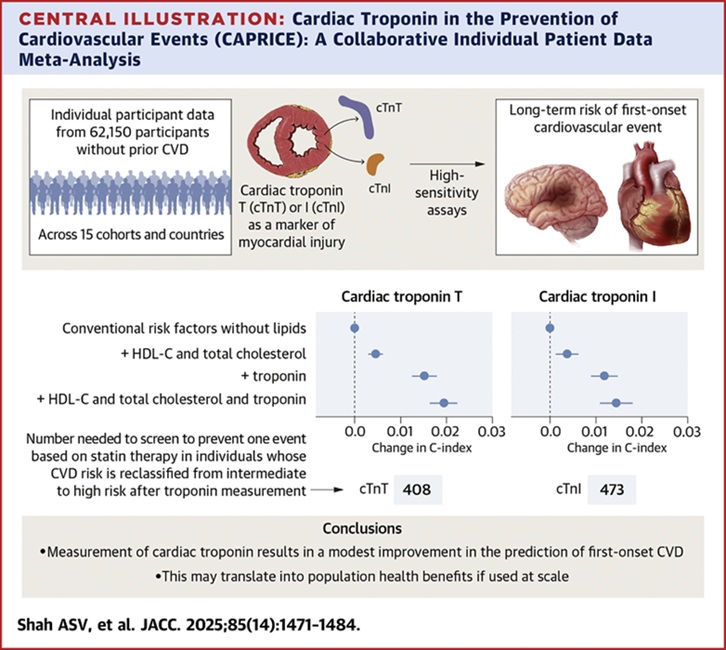
Simple Blood Test Improves Heart Attack and Stroke Risk Prediction
Troponin is a protein found in heart muscle cells that is released into the bloodstream when the heart is damaged. High-sensitivity troponin blood tests are commonly used in hospitals to diagnose heart... Read more
Blood Biomarker Test Could Detect Genetic Predisposition to Alzheimer’s
New medications for Alzheimer’s disease, the most common form of dementia, are now becoming available. These treatments, known as “amyloid antibodies,” work by promoting the removal of small deposits from... Read more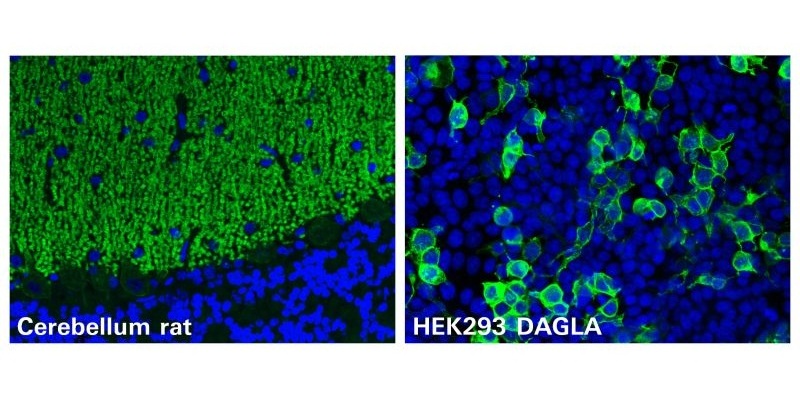
Novel Autoantibody Against DAGLA Discovered in Cerebellitis
Autoimmune cerebellar ataxias are strongly disabling disorders characterized by an impaired ability to coordinate muscle movement. Cerebellar autoantibodies serve as useful biomarkers to support rapid... Read more
Gene-Based Blood Test Accurately Predicts Tumor Recurrence of Advanced Skin Cancer
Melanoma, an aggressive form of skin cancer, becomes extremely difficult to treat once it spreads to other parts of the body. For patients with metastatic melanoma tumors that cannot be surgically removed... Read moreHematology
view channel
New Scoring System Predicts Risk of Developing Cancer from Common Blood Disorder
Clonal cytopenia of undetermined significance (CCUS) is a blood disorder commonly found in older adults, characterized by mutations in blood cells and a low blood count, but without any obvious cause or... Read more
Non-Invasive Prenatal Test for Fetal RhD Status Demonstrates 100% Accuracy
In the United States, approximately 15% of pregnant individuals are RhD-negative. However, in about 40% of these cases, the fetus is also RhD-negative, making the administration of RhoGAM unnecessary.... Read moreImmunology
view channel
Stem Cell Test Predicts Treatment Outcome for Patients with Platinum-Resistant Ovarian Cancer
Epithelial ovarian cancer frequently responds to chemotherapy initially, but eventually, the tumor develops resistance to the therapy, leading to regrowth. This resistance is partially due to the activation... Read more
Machine Learning-Enabled Blood Test Predicts Immunotherapy Response in Lymphoma Patients
Chimeric antigen receptor (CAR) T-cell therapy has emerged as one of the most promising recent developments in the treatment of blood cancers. However, over half of non-Hodgkin lymphoma (NHL) patients... Read morePathology
view channel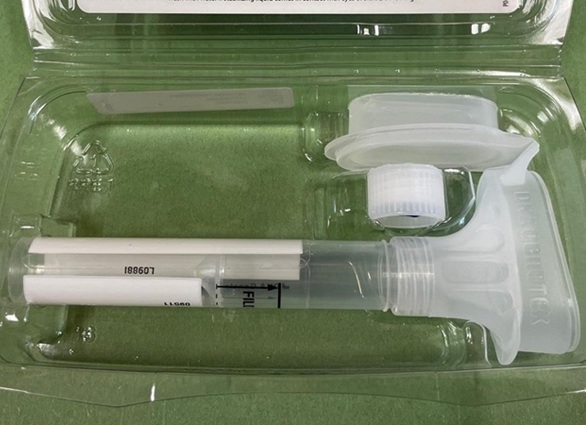
Spit Test More Accurate at Identifying Future Prostate Cancer Risk
Currently, blood tests that measure the level of a protein called prostate-specific antigen (PSA) are commonly used to identify men at higher risk for prostate cancer. This test is typically used based... Read moreDNA Nanotechnology Boosts Sensitivity of Test Strips
Since the Covid-19 pandemic, most people have become familiar with paper-based rapid test strips, also known as lateral flow immunoassays (LFIAs). These tests are used to quickly detect biomarkers that... Read more
Novel UV and Machine Learning-Aided Method Detects Microbial Contamination in Cell Cultures
Cell therapy holds great potential in treating diseases such as cancers, inflammatory conditions, and chronic degenerative disorders by manipulating or replacing cells to restore function or combat disease.... Read moreTechnology
view channel
Disposable Microchip Technology Could Selectively Detect HIV in Whole Blood Samples
As of the end of 2023, approximately 40 million people globally were living with HIV, and around 630,000 individuals died from AIDS-related illnesses that same year. Despite a substantial decline in deaths... Read more
Pain-On-A-Chip Microfluidic Device Determines Types of Chronic Pain from Blood Samples
Chronic pain is a widespread condition that remains difficult to manage, and existing clinical methods for its treatment rely largely on self-reporting, which can be subjective and especially problematic... Read more
Innovative, Label-Free Ratiometric Fluorosensor Enables More Sensitive Viral RNA Detection
Viruses present a major global health risk, as demonstrated by recent pandemics, making early detection and identification essential for preventing new outbreaks. While traditional detection methods are... Read moreIndustry
view channel
Cepheid and Oxford Nanopore Technologies Partner on Advancing Automated Sequencing-Based Solutions
Cepheid (Sunnyvale, CA, USA), a leading molecular diagnostics company, and Oxford Nanopore Technologies (Oxford, UK), the company behind a new generation of sequencing-based molecular analysis technologies,... Read more
Grifols and Tecan’s IBL Collaborate on Advanced Biomarker Panels
Grifols (Barcelona, Spain), one of the world’s leading producers of plasma-derived medicines and innovative diagnostic solutions, is expanding its offer in clinical diagnostics through a strategic partnership... Read more







